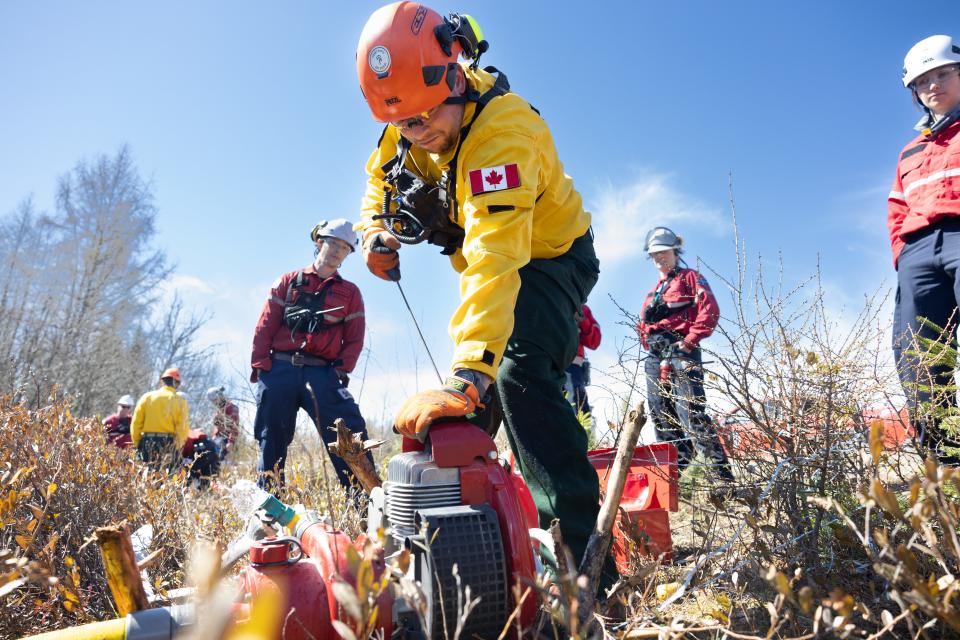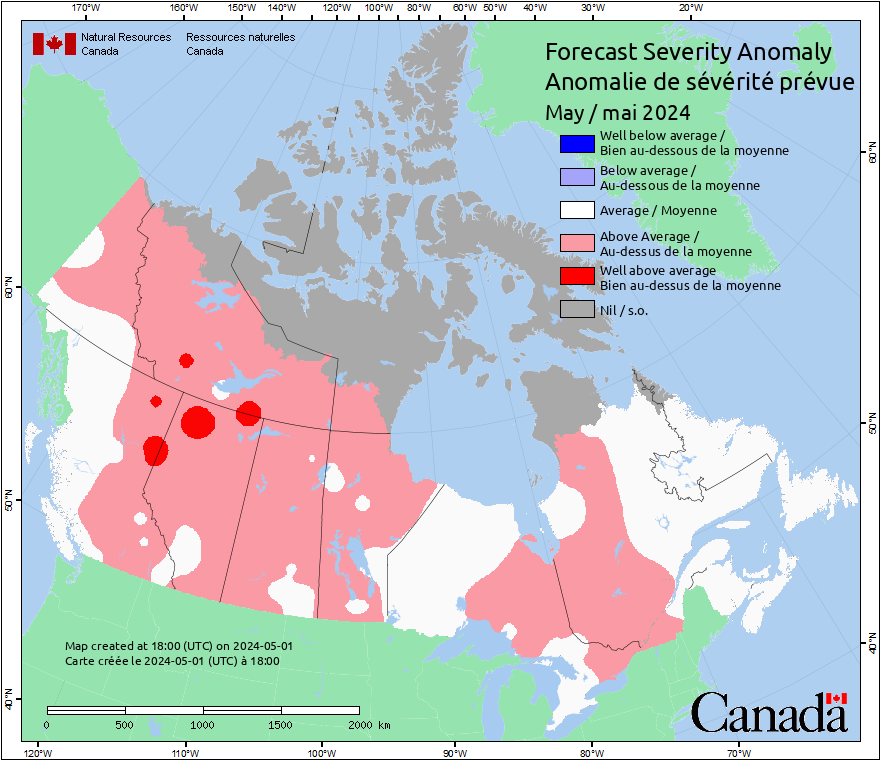Another Wisconsin summer of smoke? Canadian wildfire season should be less severe than last year.
Recent Canadian wildfire smoke provided a reminder of Wisconsin’s smoke-filled summer days a year ago, as Canada's drought continues to provide ample conditions for new fires.
Yet, last year was an anomaly, one Canadian official said, and the forecast is a return to more regular wildfire activity this year.
What that means for Wisconsin is uncertain, of course, since weather plays a big role in determining if Canadian wildfire smoke gets to the state.
“We don’t really expect to have another similar year twice in a row,” said Richard Carr, a fire research analyst at the country’s federal Natural Resources Canada and its Canadian Forest Service. “It was kind of an outlier, I think. That goes back to the summer of 2022, (when) you had fairly widespread drought … that’s still ongoing and it's actually intensified since then.”

Carr said the current fires are centered in the western part of the country. A Canadian Interagency Forest Fire Centre Inc. map showed Friday there were 118 active fires in the country, mostly in British Columbia and Alberta. The fires have burned almost a million acres.
The fires in British Columbia, which caused the smoke and subsequent air quality alert in Wisconsin earlier this week, are abnormal for this time of year, Carr said. They're a byproduct of the country’s ongoing drought leading to new fires, along what he called “holdover fires." Also known as "zombie fires," they're fires that began in a prior season but continued to smolder under snowpack. Once the snow melts and the soil dries, they can reignite.
Natural Resources Canada, the country’s natural resources department, rates the country for forecasted wildfire severity from May to September, the typical wildfire season. There are five ratings, ranging from well-below-average to well-above-average.
In May, much of Canada is rated average or above-average. Small pockets of Alberta, British Columbia and the Northwest Territories were rated at the highest risk, or well-above-average.

Next month, the forecast projects well-above-average fire risk in larger parts of British Columbia and Alberta, along with a portion of western Saskatchewan. That diminishes in July, before an August and September projection of well-above average fire risk again.
Carr said that the country is seeing a “much quieter year than last year” in the forecasting.
“It’s looking like an average year … I think we’ll see sporadic activity through a lot of the country,” he said. “There’s always a chance that you’ll see some smoke impacts (in Wisconsin) … I think this year’s smoke concentrations will be less than 2023 and a little more spaced out.”
On May 13, the Wisconsin Department of Natural Resources issued its first air-quality advisory of the year due to smoke from Canadian wildfires. Last year, the first came around this time as well, as the department issued one on May 18 after fires in eastern Nova Scotia province caused heavy smoke.
Those alerts indicate when the air has become unhealthy to inhale, typically by two things — particulate matter and ground-level ozone pollution. Wildfire smoke falls into the first category and causes the sky to become hazy, before the particulate matter disperses.
How that occurs, though, relies on weather effects, said Craig Czarnecki, who's part of the DNR's air management program.
He said that, while the Canadian drought raises the possibility of increased wildfires and thus smoke, “it's too early to say for sure.”
“Because a lot of it depends on meteorology,” Czarnecki said. “To get that smoke transferred hundreds or thousands of miles away, certain meteorology needs to be in place.”
Typically, smoke is carried from wildfires in either high- or low- pressure systems. For example, the early week smoke was carried from British Columbia by a cold front, he said. In turn, the smoke dissipated behind a Monday weather system that pushed it out.
Czarnecki said the DNR tracks the smoke through satellite imagery and weather models, giving them a few days' warning on whether it'll affect the state. The department is then responsible for issuing alerts by county.
“It’s too early to tell. I don’t think the next few days we’ll be seeing any impacts,” he said. “But maybe in the next week or so it’s possible, but it's weather (dependent).”
In Wisconsin, the wildfire season continues at a strong pace, too. This year, there have been 728 wildfires, up from the 10-year average of 466 wildfires at this time of year. However, the total acres burned is less, at 1,397.11, compared to 1,443.42.
Canadian wildfires
Wisconsin air quality
This article originally appeared on Milwaukee Journal Sentinel: Will it be another smoky summer in Wisconsin from Canadian wildfires?

